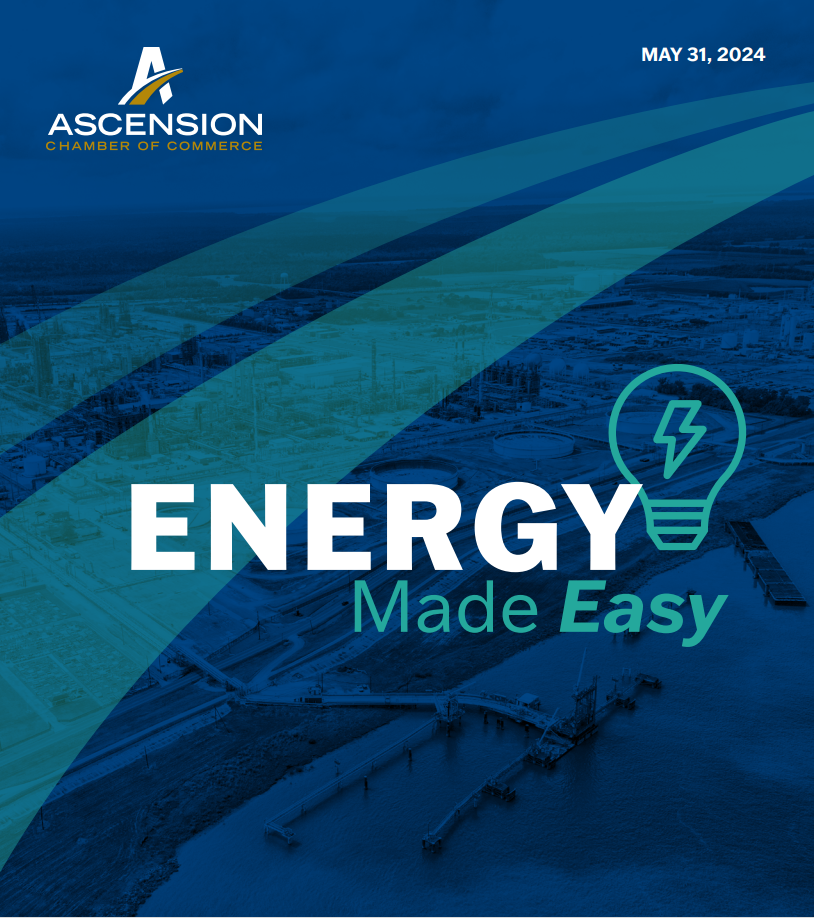Louisiana’s Investment in Clean Energy: Pioneering Sustainable Industry Practices
How the Industry is Embracing Sustainable Solutions for a Greener Future
Understanding the Energy Transition
The “energy transition” refers to the shift towards clean technologies and lower-carbon energy sources, such as solar, wind, and nuclear power, within industrial and commercial processes. This transition is a significant evolution in the industry, following centuries of change that have led to today’s technological advancements.
Louisiana is well-positioned to lead this global shift towards clean energy. As a long-standing energy leader both domestically and internationally, the state has the necessary assets to drive forward clean energy production. Although the science and technology behind the energy transition can be complex, Louisiana’s commitment to investing in these solutions will create jobs, reduce its carbon footprint, and contribute to a more sustainable future.
Our focus includes educating the Ascension Parish community about the benefits and impacts of these clean energy processes, ensuring that everyone understands the positive changes and opportunities that come with this transition.
Today’s Top Energy Sources
Decarbonization
The shift towards reducing and eliminating carbon dioxide emissions is called “decarbonization,” and it is a gradual process, requiring decades of infrastructure development and technological innovation to effectively utilize, store, and distribute energy from these sources. In the meantime, practices like carbon capture provide a means to continue using conventional energy while reducing carbon emissions.
These alternative forms of energy allow us to broaden our energy sources, which is crucial for producing more energy, supporting energy independence, and reducing carbon dioxide emissions. By relying on a mix of energy sources rather than solely on fossil fuels, we can avoid supply interruptions and price fluctuations commonly associated with coal, oil, and natural gas.

- Decarbonization has emerged as a crucial strategy to transform our global energy systems and achieve net-zero greenhouse gas emissions by 2050.
- As of 2019, Louisiana has the seventh highest CO2 emissions in the nation with roughly 60 percent of emissions coming from the industrial sector and 14 percent from power generation.
Carbon Capture
Carbon capture is a way to reduce carbon dioxide (CO2) emissions by separating CO2 produced by power generation and industrial activity from other gasses coming from a facility. The CO2 is captured before it can enter the atmosphere and is either stored underground through a process called subsurface sequestration or used in products like concrete or chemicals.
Although carbon capture has been around for 50 years, it’s now being used more to protect the environment. New investments help states meet sustainability goals to positively impact our future.
This technology is crucial for cutting down emissions, as it can trap 90% of the CO2 from industrial processes. The captured CO2 is stored about a mile underground, beneath impermeable rock, in porous rock, which acts like a sponge for the condensed carbon dioxide. Louisiana’s natural geology is perfect for this type of storage. For instance, the geological pore space under Lake Maurepas is ideal for storing CO2, and tests are currently being conducted to confirm these characteristics before storing any Carbon Dioxide there.
Wells used for storage are closely monitored to ensure that groundwater and local ecosystems remain safe. Although the CO2 captured is pure, non-toxic, and stored safely about a mile underground, technologies are in place to ensure it stays securely in place and does not affect drinking water sources.
To learn more about the carbon capture process check out Louisiana’s Mid-Continent Oil and Gas Association’s video.

Worldwide, more than 400 million metric tons of carbon dioxide is already permanently stored in what are called pore spaces, or the empty spaces between porous rock layers deep underground under layers of impermeable caprock.
Many companies in Louisiana and across the U.S. have adopted carbon capture technology as a method for reducing carbon emissions in manufacturing practices.
Louisiana is now one of only 3 states – and the only state in the Gulf South – to have been granted primacy for Class VI wells, positioning the state to utilize our unique geologic structure to create significant investments into our environment and economy.
Hydrogen
With the Industrial Landscape of Louisiana, we have abundant and diverse energy and resources that can be utilized as feedstock for hydrogen production. For instance, South Louisiana’s ammonia production facilities could be utilized for the breakdown of ammonia into hydrogen and nitrogen. That hydrogen can, in turn, be used as fuel or in other industrial processes.
There are three main forms of Hydrogen Production: Grey, Blue, and Green. Grey and Blue Hydrogen are both produced when natural gas is used within industrial processes, but the difference in Blue Hydrogen is that Carbon Dioxide emissions are captured and stored instead of being released into the atmosphere. Green Hydrogen is produced using renewable energy sources or electrolysis, which creates zero carbon emissions.
Using hydrogen as a fuel can help reduce greenhouse gas emissions and achieve emissions goals since it produces little to no harmful emissions.

Hydrogen can be used as a fuel to power vehicles, generate electricity, and heat buildings. When hydrogen is burned as fuel, it releases energy and produces only water vapor as a byproduct, making it environmentally friendly and compatible with much of our existing infrastructure.
Hydrogen projects in our area will result in billions of dollars of economic impact while also further decarbonizing our own environment.
Solar
The sun emits an enormous amount of energy in the form of radiation. Solar energy systems absorb this energy and convert it into usable forms, including electricity through photovoltaic cells and panels.
In Louisiana, there is the potential to generate up to 13,000 megawatts of solar power, equivalent to the state’s total electricity demand. Our climate and landscape make for an ideal location to generate solar power. (Source: Louisiana Economic Development)

There are currently 60+ solar companies operating in Louisiana which employ over 3,000 Louisiana residents and have the potential to provide over 7,000 new jobs. (Source: Louisiana Economic Development)
Offshore Wind
Wind energy systems harness the kinetic energy of the wind for conversion into a usable form of energy. Converting Wind energy into electricity has been in place for more than 200 years.
Louisiana’s Location on the Gulf of Mexico positions the state as a great fit for offshore wind power generation, which could potentially generate 10% of all U.S. Wind Energy. Louisiana ranks as the fourth highest state in the nation for offshore wind technical potential.

According to the National Renewable Energy Laboratory, Louisiana ranks as the fourth highest state in the nation for offshore wind technical potential, with potential for a single offshore wind project to create 4,470 construction jobs and 150 full-time operations jobs.
Additional Resources
- Industry Makes Video and Data Sources
- LMOGA Capture LA Carbon Website and Video
- Houston CCS Alliance: Carbon Capture and Storage 101
- Houston CCS Alliance: CCS A Safe and Proven Technology
- Houston CCS Alliance: CCS A Three Step Process
- How Does Carbon Capture and Storage Work (NewGenCoal in Australia)
- Video on EPA’s safety regulations for chemicals

Interested in Learning More?
For more detailed insights into these transformative technologies and their impact, read the full Energy Made Easy report.
Why Industry?
Read how the industrial sector in Louisiana is crucial for economic growth, job creation, and producing essential life-changing products that impact both the community and the world.
Economic Impact
Louisiana’s vast pipeline network, integrated transport system, geological storage, and refineries position it to lead in clean energy, create jobs, reduce carbon emissions, and attract significant economic investments.
Ascension Chamber of Commerce
217 West Main Street
Gonzales, LA 70737
Phone: (225) 647-7487
Fax: (225) 647-5124
Quick Links

© Copyright 2024. Ascension Chamber of Commerce.
Terms & Conditions
